Everybody’s favourite summer fruit
A hot summer’s day at a campsite or around the pool just wouldn’t be the same without a beautiful ripe watermelon cut into slices and handed out like sweets to very eager hands. But every summer, it’s hard not to grimace when you see how much the price has gone up since the previous year. The solution? Grow your own!
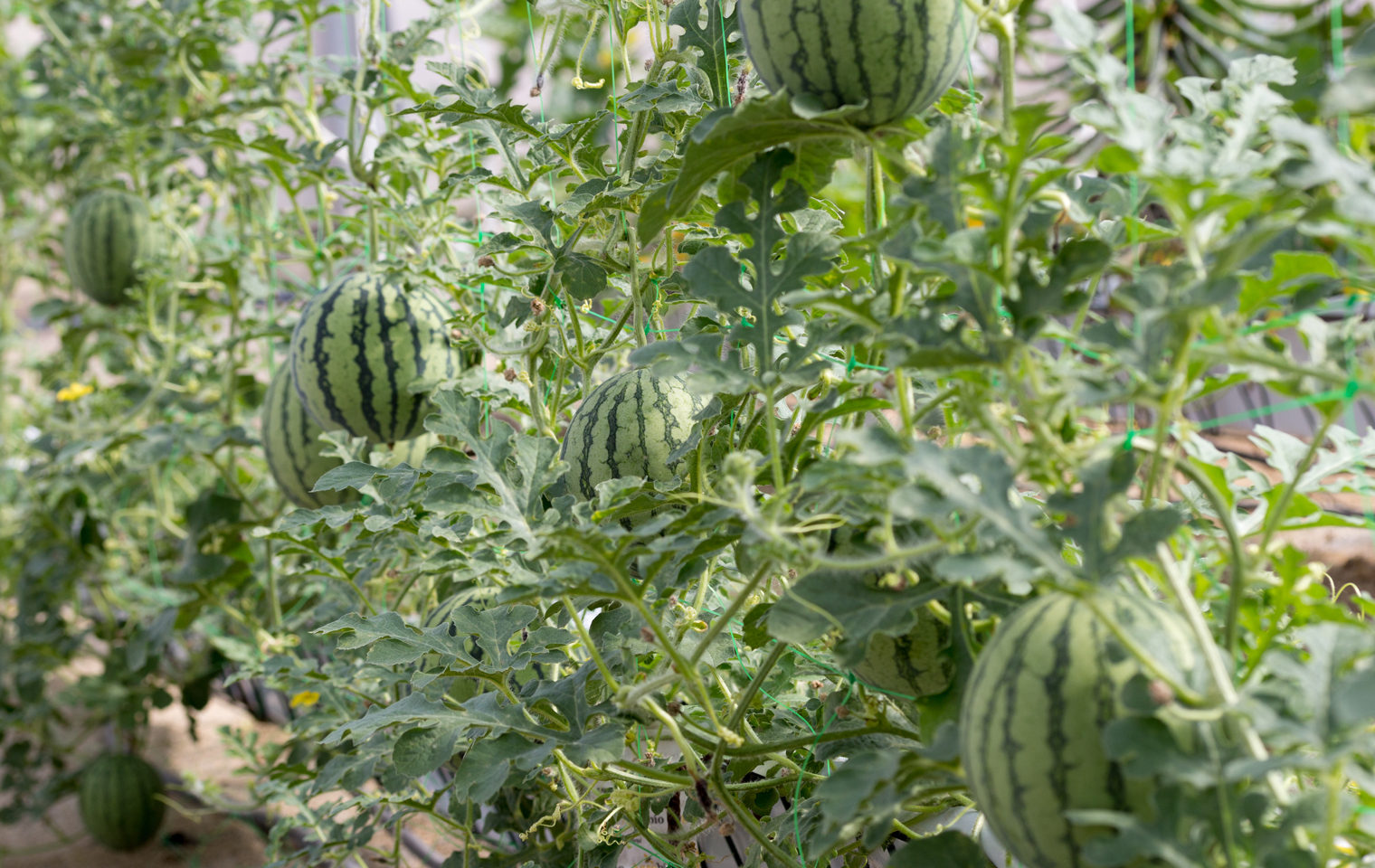
Have you ever considered growing your own watermelons? The idea may seem ridiculous given the size of them, but watermelons are surprisingly easy to grow, and there are varieties available that are smaller than the 10 - 20kg type you might find in the supermarket. The catch is that you will need a lot of space, as even one plant requires a lot of vining or trailing room and depending on the variety, only produces two to four fruits per plant. This is not because they are lazy producers, but rather because the size of the melon means a lot of energy is needed to produce the fruit. So, if you want a decent supply of watermelons throughout summer, it makes sense to plant more than one to make it worth the effort and the sacrifice of space.
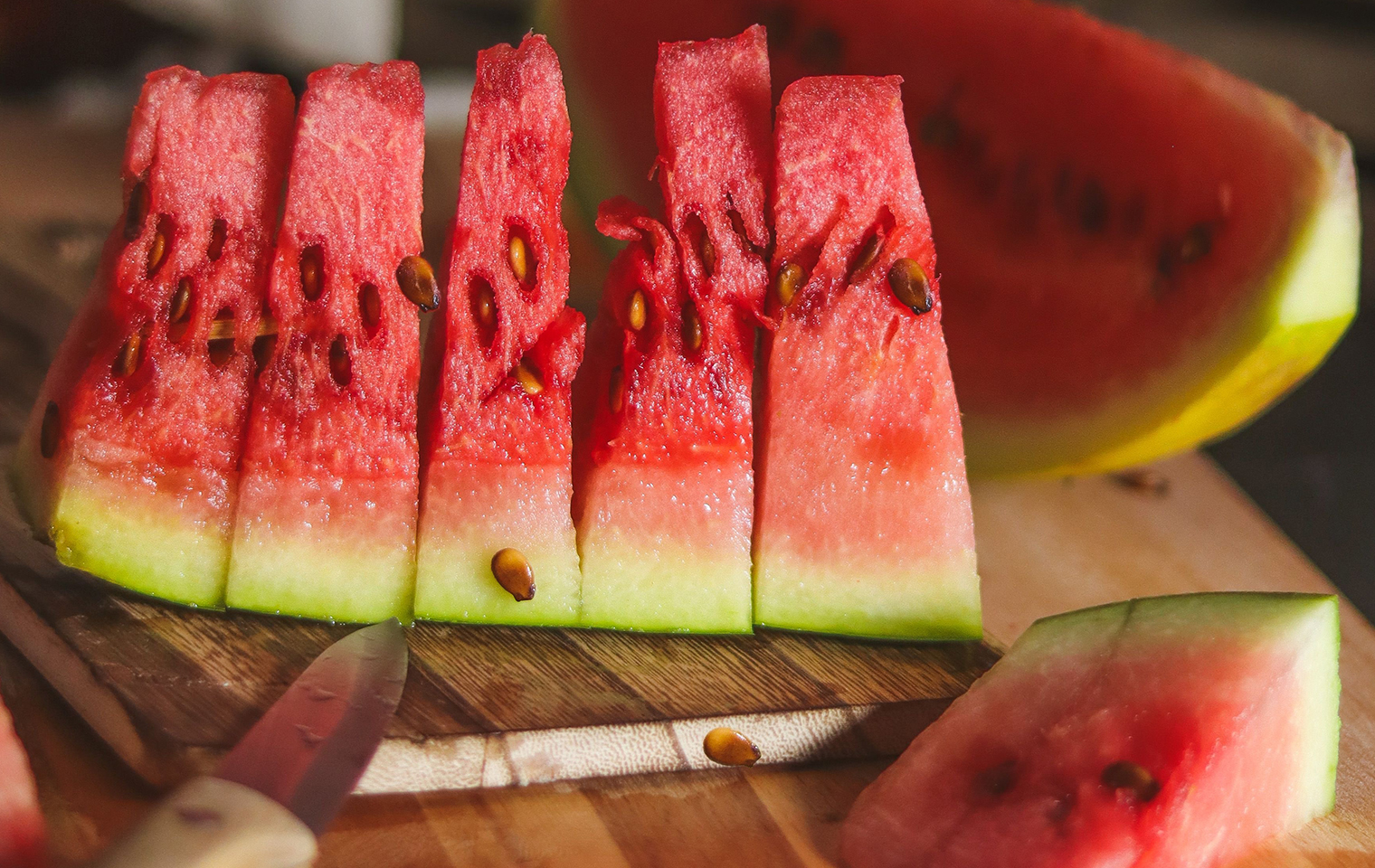
The right environment
Thought to have originated in the arid and semi-arid regions of Africa, watermelons and other melons need a warm climate and full sun. The seeds or seedlings can be planted from spring all the way through summer, but only once the soil has reached temperatures of at least 15°C.
If you have the space and inclination, you could even grow smaller variety watermelons to sell at your local market. There is always a demand for watermelons and these days, people are very keen for fruit and veg that was grown as close to home as possible and doesn’t cost an arm and a leg. What you need is healthy, rich soil and a lot of space. The good thing is you can grow vertically, and maximise any space you may have. Sugar Baby watermelons would be ideal for this, as they grow quickly and because of their size, take up less space – on the land and in your vehicle.
Watermelon plants grow in a vine that sends out tendrils that spread across the ground or up a trellis if trained. They have an extensive, shallow root system, with most of the roots in the top 20cm of soil, as well as a tap root that descends to around 40cm. For this reason, it’s important to control weeds and irrigate regularly, and at the same time, the soil needs to be a good depth to accommodate the tap root.
The ideal soil is sandy loam to loam, with a pH of between 6 and 7. Make sure you add plenty of well-rotted manure or compost to the soil and water well before you plant your seeds or seedlings. If you have clay soil, it might be best to plant in a raised bed to allow for the right soil composition and adequate drainage. You can plant direct from seed into the soil, or plant seeds in seed trays and transplant within 3 weeks. If you are planting a few, make sure they are spaced around 70cm – 1m apart, depending on the variety, to allow for maximum air circulation. Plant seeds to a depth of 30mm.
COMPANION PLANTING
Watermelons are compatible with sweetcorn, sunflowers, herbs, lettuces, marigolds, nasturtiums, and radishes.
They are not compatible with and shouldn’t be planted close to cucumbers, squash and potatoes.
Varieties
For the home gardener, a baby watermelon like Sugar Baby is a really good choice, because it can be trained and tied onto a trellis, and the fruit can be supported with a homemade hammock if need be. Sugar Baby fruits are small and round, growing to around 3 – 5kg only. Importantly, they are sweet, juicy and delicious, perfect for a refreshing treat on a hot, sunny day. The plant only produces two fruits, so you would need to plant at least 3 to enjoy a few melons.
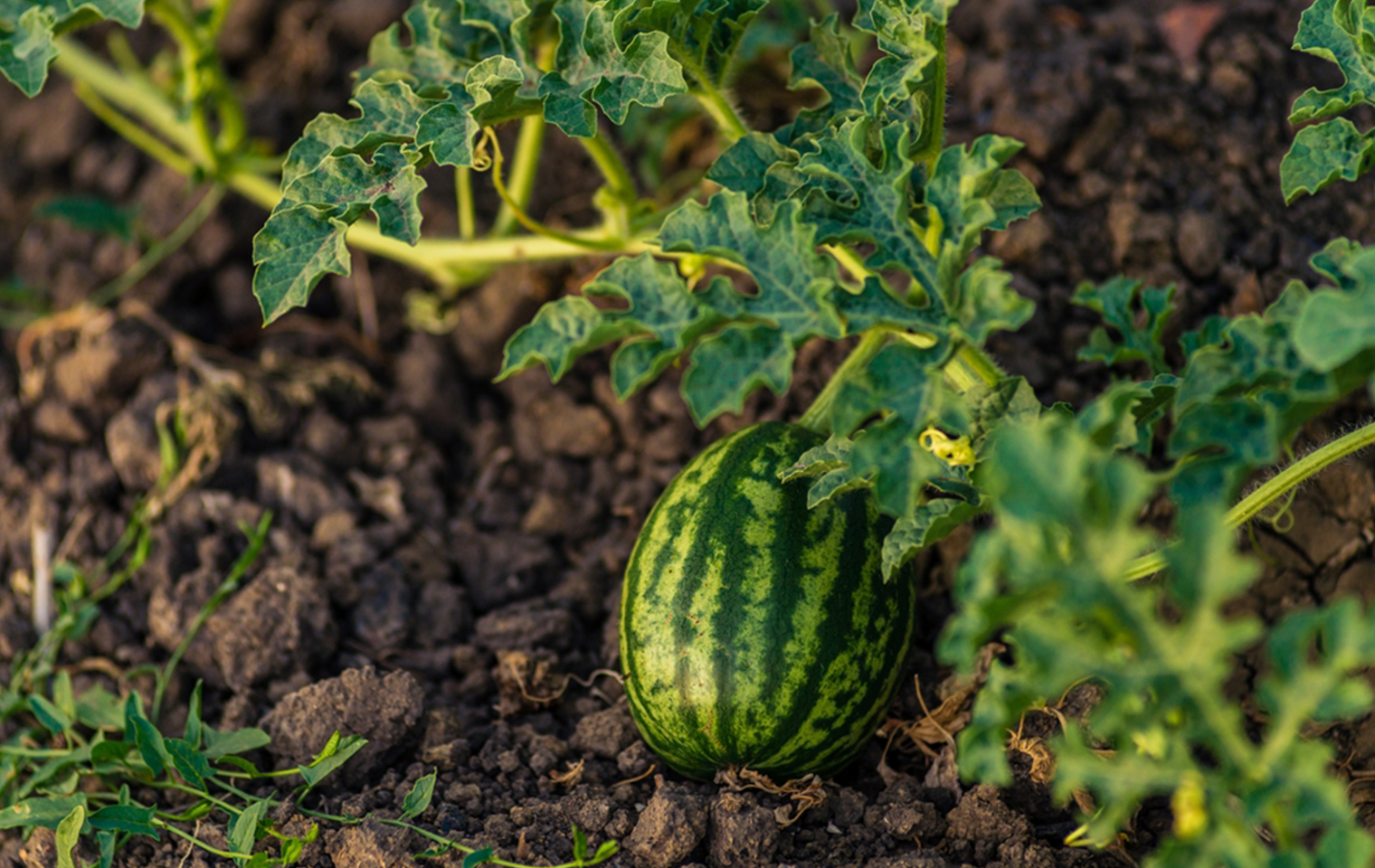
The All Sweet variety is also a good option. Although slightly bigger and growing to an oblong shape, it is, as the name suggests, extra sweet, with juicy bright red flesh and only a few small seeds. The All Sweet is fairly disease resistant and adaptable to most soils, but does best in a humus-rich soil.
Growing period
In terms of caring for your plant once it’s growing, there are a few simple things you can do to give your watermelons the best chance of growing perfectly and delivering on flavour.
The All Sweet is fairly disease resistant and adaptable to most soils, but does best in a humus-rich soil.
Once your seedlings are established, make sure you mulch well to deter weeds and retain moisture and heat. Your watermelon plants will need consistent irrigation until pollination. Then, once the fruits are around the size of a tennis ball, you can reduce watering. If you see any wilting of the leaves, you are not giving the plant enough water.
If you are growing your watermelons on a trellis, you can choose to support the fruit with slings made from netting or fabric. Having the fruits off the ground will also help with pest control and reduce the risk of damage. Trellising also improves air circulation and can help to reduce the risk of foliar disease problems. To further reduce insect and disease problems, don’t plant cucumber family crops (melons, squash and pumpkins) in the same spot two years in a row.
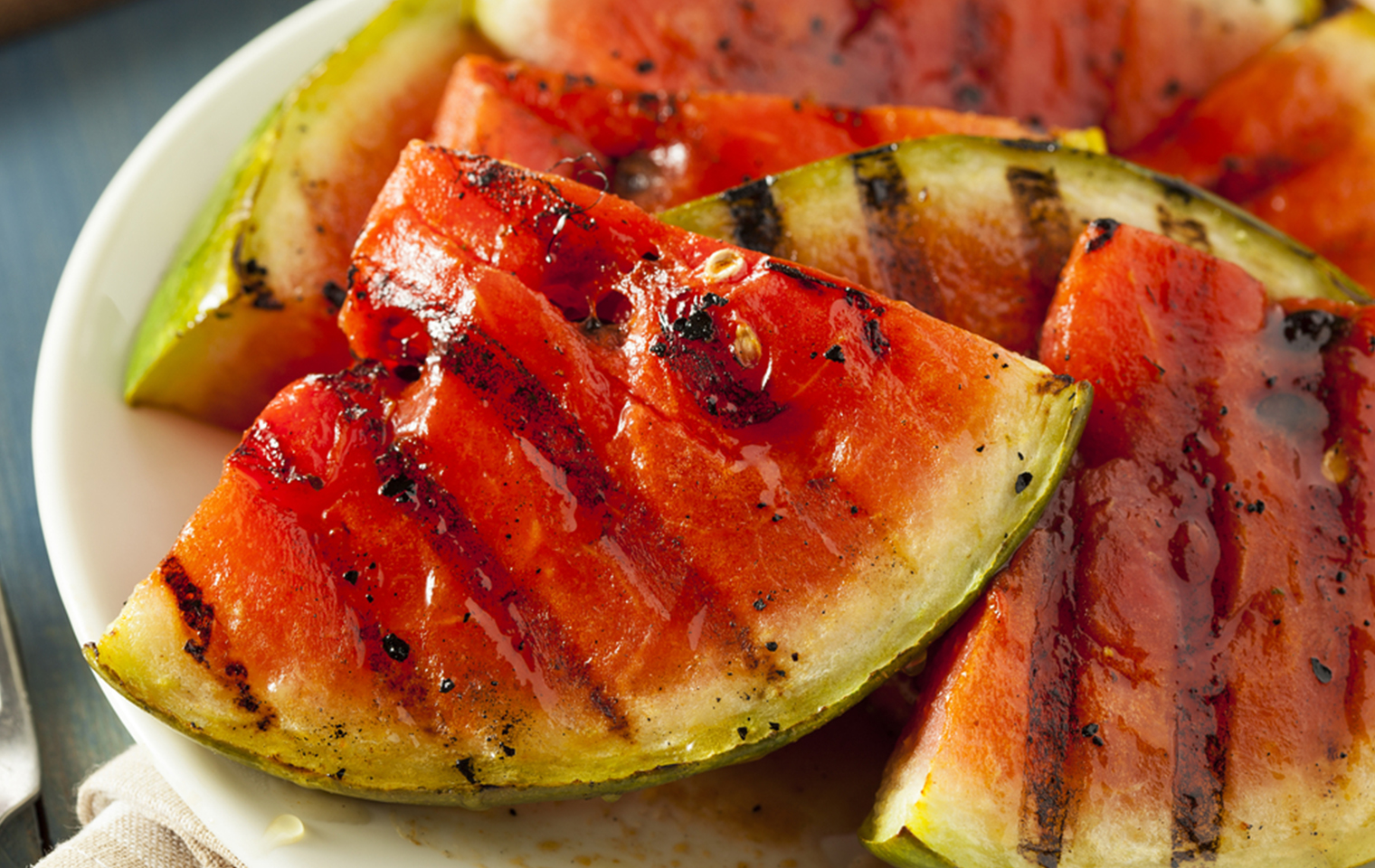
Braai’d watermelon
As strange as it sounds, braai’d watermelon slices are not only delicious, they look stunning too and can be served as one of the salads with your braai meat. Cut thick watermelon slices (rind included) to about 4cm thickness. Brush with a bit of oil and grind a small amount of salt and pepper on each side. Braai for just a minute or two on each side to get a bit of a char and caramelisation, but not actually cook the fruit. You want those beautiful grid lines, but your fruit to remain firm. When you are ready to serve, arrange the slices onto a platter and sprinkle with olive oil, feta, chopped Italian parsley and finely chopped mint.
You can choose to feed the plant with a general fertiliser once a month, but don’t feed too close to the roots, or the fertiliser will burn them. Frequently hand-pull weeds when they’re small. Because of the watermelon’s shallow root system, they could easily be disturbed if weeds are left to grow too big.
Once the watermelon vines start to produce blossoms, pollination by bees becomes important, so avoid any chemical pesticides, as they can kill the beneficial bugs your plant needs in order to fruit.
Harvesting
Large watermelons mature within about 90 days, and Sugar Baby melons at around 75 – 80 days. It’s very important that you harvest your melons at the right time. Too early, and they won’t be sweet and delicious; too late and they will be overripe and mushy. There are a few ways to tell if your watermelon is ripe. The first is by looking at the colour – an underripe melon will still have a shine to it, whereas it dulls a bit as it become ready to harvest. You can check if your fingernail can easily penetrate the skin – if so, it’s probably not quite ripe yet. Most importantly, look at where the fruit attaches to the vine. A small crack might appear at this point or the stem near the fruit may be starting to wither and go brown. These are both signs that the vine is ready to release the fruit. You can also use the old trick of holding the melon close to your ear and knocking it with your knuckles. A hollow sound indicates ripeness or over-ripeness, so don’t rely on this method.
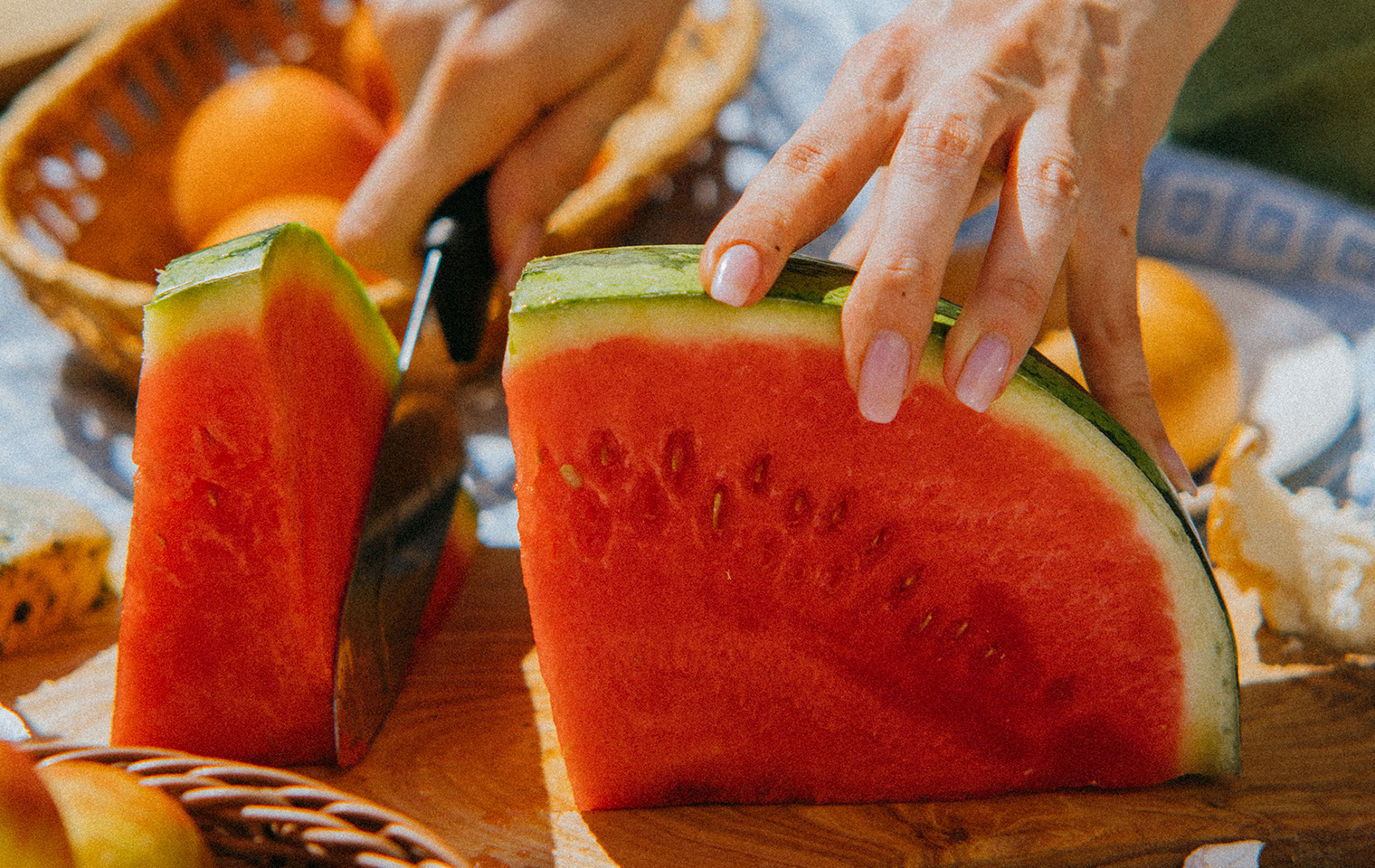
Once harvested, you can store your watermelon at room temperature for a week or two. Only put it in the fridge when you’re ready to eat it. If you cut your fruit up and store in an airtight container, you will need to eat it within a day.
Growing your own watermelons is not only much cheaper than buying them, it’s also really rewarding and if you have children, they are bound to find the whole process fun and delightful, especially watching a watermelon grow – quite quickly – from the size of a golf ball to a full-sized melon.



